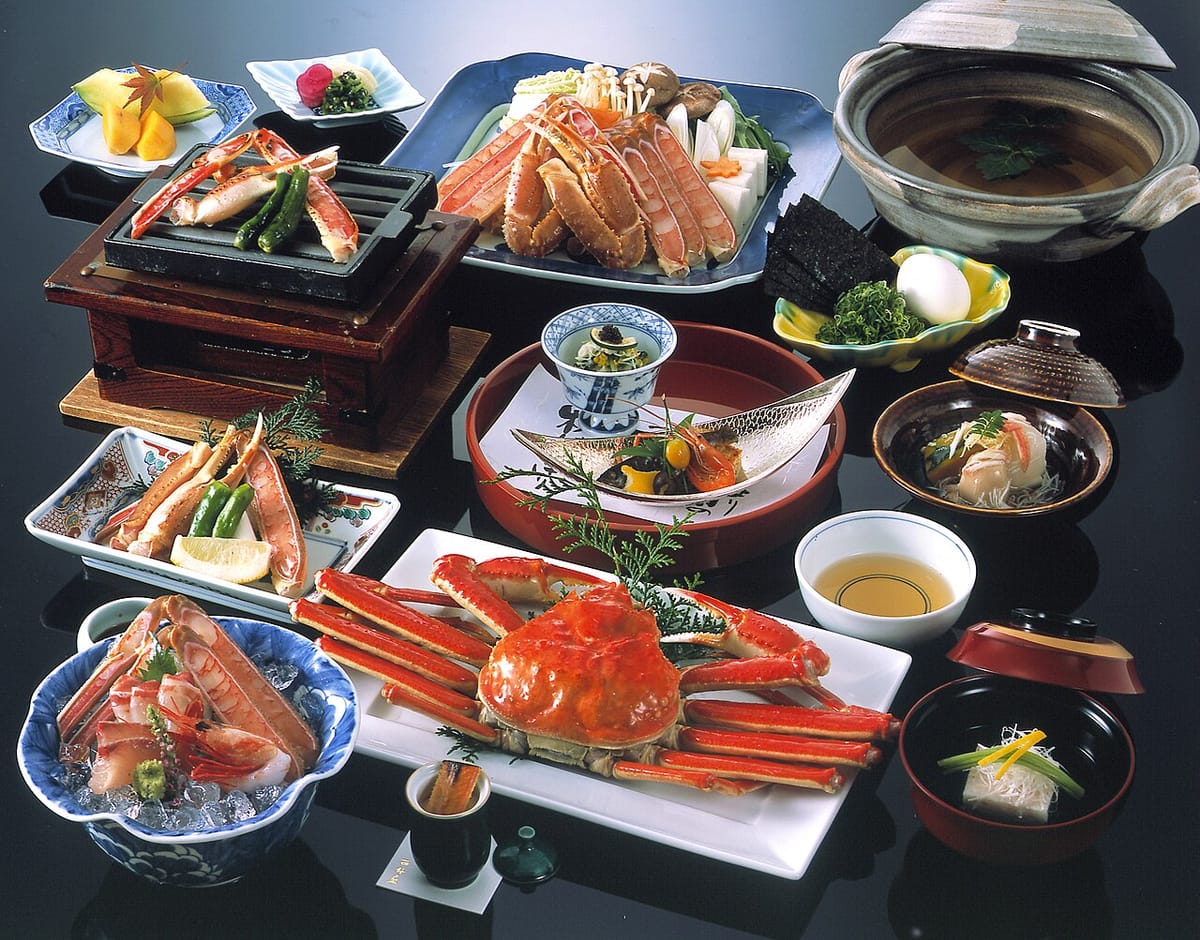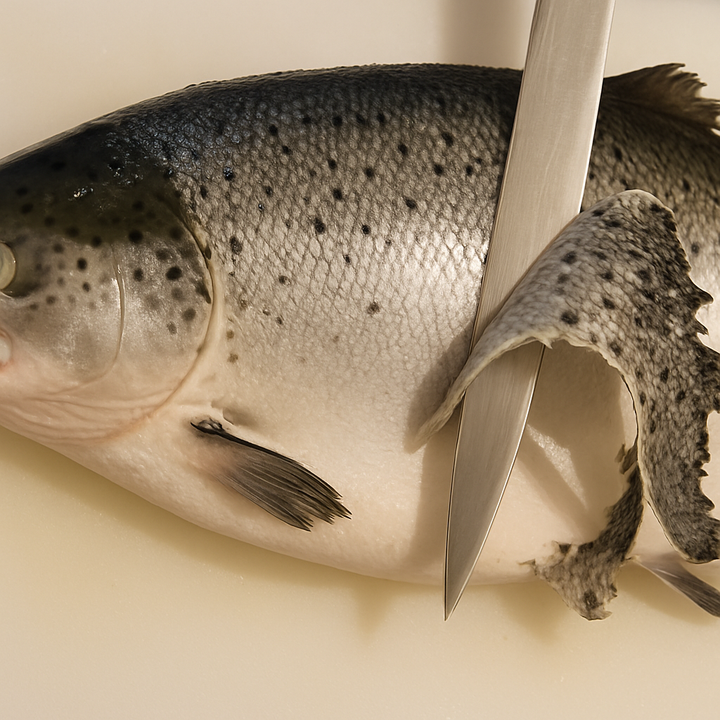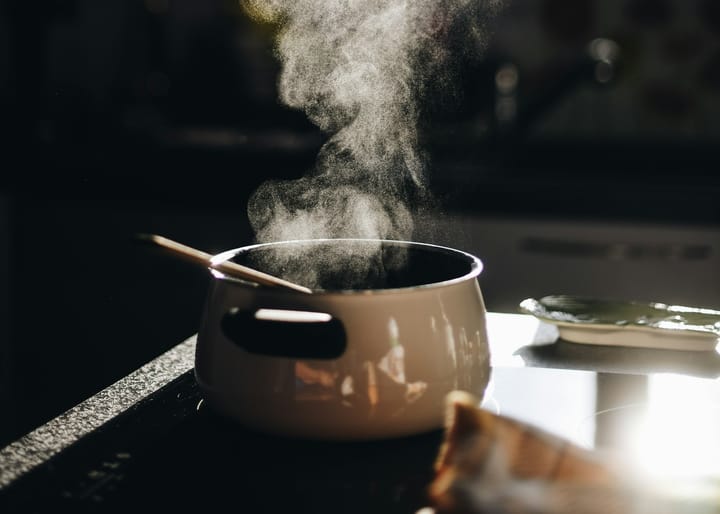Renowned Snow Crab Fishing Grounds in Japan
Nestled off the coast of Kyoto Prefecture, the "miracle fishing grounds" boast a unique seabed at depths of 250 to 400 meters, where nutrient-rich soil and abundant marine life create the ideal conditions for the renowned Matsuba snow crabs.

Off the coast of Kyoto Prefecture lies a unique seabed, ranging between 250 to 400 meters in depth.
This seabed, resembling a vast field, is covered with light, mud-like soil teeming with plankton, fish, and shellfish—ideal nourishment for matsuba crabs, also known as snow crabs, one of the world's most expensive crabs.
These pristine conditions, famously referred to as the “miracle fishing grounds,” contribute to the exceptional quality of snow crabs harvested in the Kyoto by the Sea region.
Each November, when the fishing ban is lifted, tourists flock to Kyoto by the Sea to indulge in the region’s renowned crab dishes.
From crab sashimi and grilled crab to crab shabu-shabu, boiled crab, crab miso, and even crab shells filled with sake, the area’s culinary artisans have developed diverse methods to celebrate this prized ingredient.
Thanks to advancements in fishing techniques and distribution systems, previously challenging dishes like raw crab sashimi have also gained popularity.
While improved fishing and distribution methods have played a role in ensuring the quality of these crabs, the primary factor remains the exceptional natural environment.
The seabed’s nutrient-rich mud supports the growth of plankton, creating an abundant food source for the crabs.
Additionally, the Sea of Japan’s frigid, nutrient-rich waters, filled with nitrogen and phosphorus, provide an ideal habitat.
Compared to the Pacific Ocean, where deep-sea temperatures hover around 10°C, the Sea of Japan’s waters average a chilling 2°C, an optimal range for snow crabs to thrive.
Proximity to the fishing port also ensures unmatched freshness; boats can reach the fishing grounds within 1.5 to 2 hours.
Crabs that are underdeveloped, such as the freshly molted water crabs, are released back into the sea, ensuring sustainable fishing practices.
Though female snow crabs, locally known as seko crabs, are also popular, the male matsuba crabs remain the region’s hallmark delicacy.
A "Protected Area" Ensures Sustainability
Near the fishing grounds, seven square-kilometer “protected areas” have been established to safeguard crab populations.
These zones feature tetrapod-like stones piled on the seabed at depths of 300 meters, preventing fishing nets from being cast.
Crabs in these reserves grow without the threat of predators, significantly enhancing their quality. Only crabs that venture outside these zones are caught, allowing for both sustainable harvesting and consistent quality.
Once overfished to the point where annual catches plummeted from 200 tons to just 50, the region’s crab populations have rebounded.
The introduction of protected areas and sustainable practices has restored annual catches to approximately 150 tons.
Taiza Crab: The Gold Standard of Snow Crabs
Among the snow crabs harvested in Kyoto by the Sea, the Taiza Crab stands out as a premium crab brand.
Originating from Taiza, a small fishing district in the town of Tango, these crabs are prized for their rarity and exceptional quality.
Often referred to as “phantom crabs,” Taiza Crabs are caught by only five licensed vessels, each adhering to rigorous standards.
Not all crabs caught in the Taiza region earn the prestigious “Taiza Crab” label; only those meeting strict criteria set by experienced fishermen are branded.
Innovative Methods Preserve Freshness
Taiza fishermen pioneered the use of onboard water tanks, allowing crabs to roam freely in seawater during the return journey to harbor.
This innovation not only preserves freshness but also enables the crabs to expel mud they may have ingested while on the seabed. In earlier times, the absence of such methods often resulted in a gritty eating experience.
Today, these water tanks ensure that the 300 to 500 crabs brought back by each vessel are not only fresh but also clean.
Before the crabs reach the market, they undergo meticulous sorting. Fishermen inspect each crab for size, meatiness, and any scratches or damage.
The sorted crabs are then transported to a nearby wholesale market and auctioned within an hour, preserving peak freshness.
An Exquisite Ranking System
At the wholesale market, experienced connoisseurs rank the crabs into more than 40 categories based on size, meat content, and overall quality. This detailed grading process requires exceptional skill and expertise.
Crabs are displayed in sets of five on ice-covered pallets, a method that not only aids in inspection but also ensures freshness.
Rapid cooling causes the crabs to curl their legs, a natural mechanism that further helps maintain their prime condition.
A Culinary Treasure
With its exceptional natural environment, sustainable fishing practices, and innovative preservation methods, Kyoto by the Sea has become a haven for snow crab enthusiasts.
The region’s crabs, particularly the coveted Taiza Crab, set the standard for quality and flavor, offering a culinary experience that is as unique as the waters they come from.


